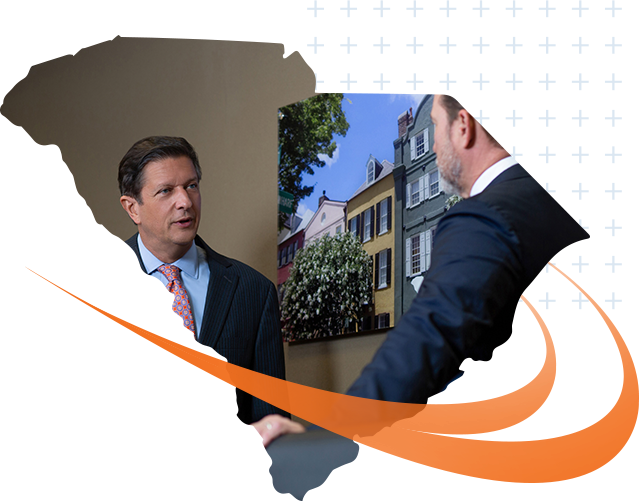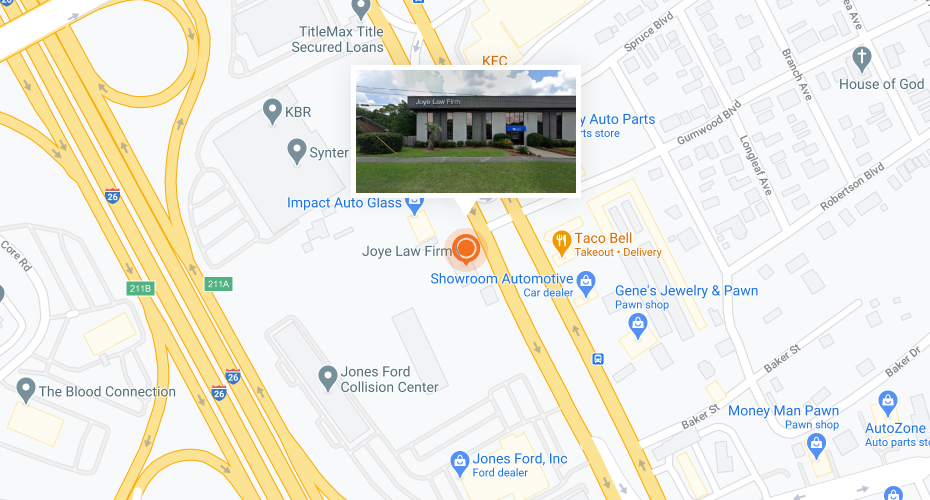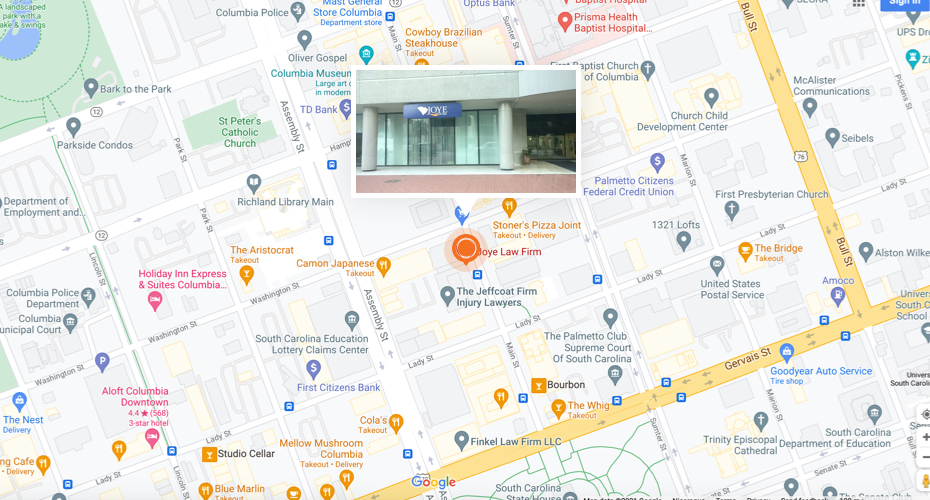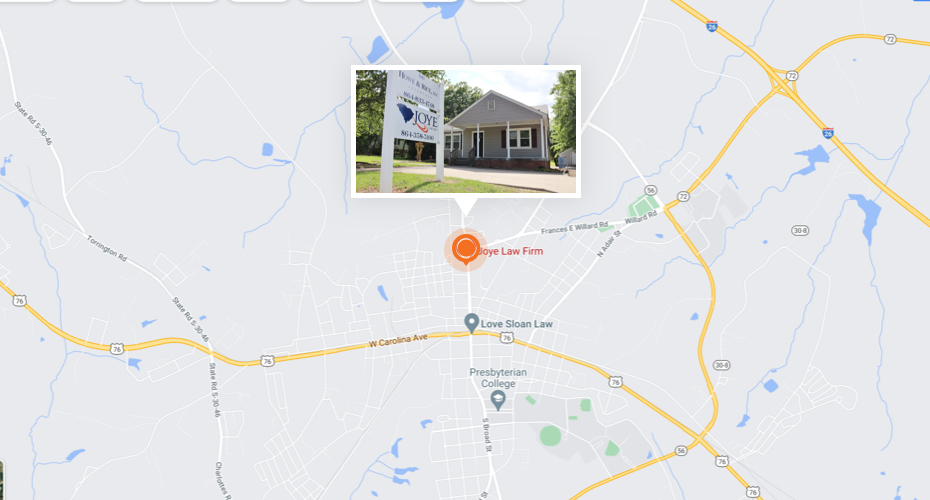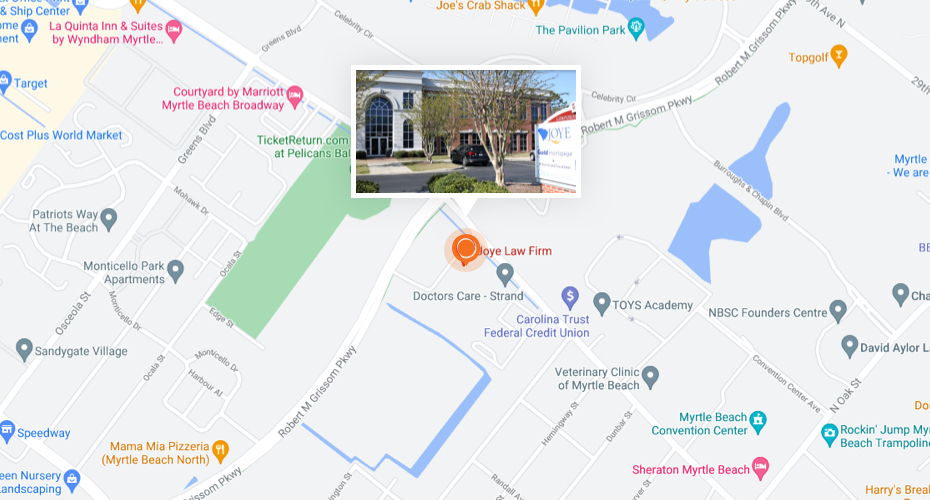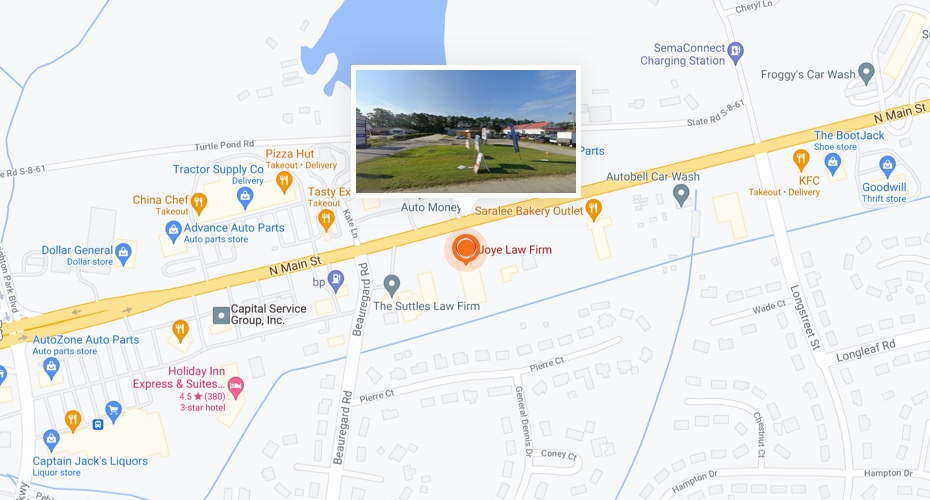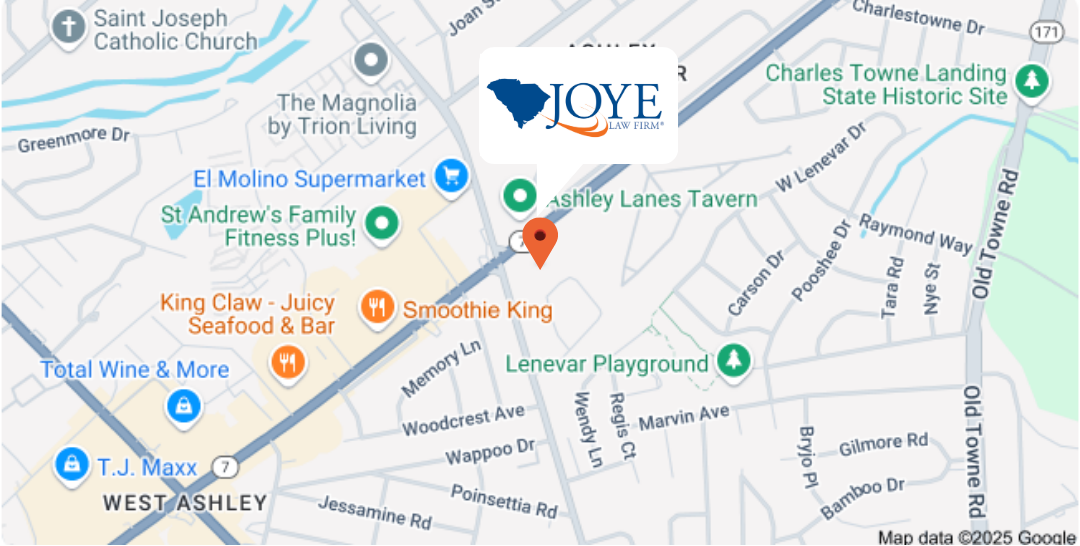
The blind spots on large commercial vehicles such as 18-wheelers are significantly larger than those of passenger vehicles. Truck drivers must be aware of these blind spots and take all necessary precautions while driving to prevent dangerous and potentially deadly accidents.
If you were injured or if you lost a loved one in a truck accident, you may be entitled to compensation if the truck driver or the trucking company was negligent. Our truck accident attorneys at Joye Law Firm have decades of experience investigating truck crashes and seeking justice for accident victims in South Carolina. We stand ready to fight for you. We’re familiar with how frequently collisions caused by commercial trucks involve truck drivers’ failure to keep track of vehicles in blind spots. Contact us now to schedule your free initial consultation with a knowledgeable member of our team.
South Carolina Truck Blind Spot Accident Claims
When the driver of a large truck gets behind the wheel, it’s the driver’s responsibility to act safely and be aware of surrounding vehicles on the road at all times. Even when a semi driver can’t see your car in their mirrors, they still have a duty to ensure that an adjacent lane is clear before attempting to merge into it. When a truck driver makes an improper lane change, the driver may collide with a vehicle or multiple vehicles in their blind spot and cause a serious accident.
Some of the most common injuries included in truck blind spot accident claims are:
- Head and brain injuries, including concussions and traumatic brain injuries

- Neck injuries, including whiplash and other soft-tissue injuries
- Back, spine, and spinal cord injuries such as herniated discs
- Abdominal injuries, including internal organ damage
- Broken bones
- Cuts and lacerations
- Disfigurement, scarring, or amputation
- Partial or total paralysis
- Seatbelt injuries
If negligence on the part of a truck driver or a trucking company caused your injuries, you shouldn’t have to pay for the associated medical bills, damage to your vehicle, and other losses that you’ve incurred. An experienced S.C. truck accident lawyer can investigate your accident and determine what types of compensation that you may seek. The at-fault party may be responsible for:
- Medical costs you incurred as a result of injuries in a blind spot accident
- Pain and suffering caused by your injuries
- Loss of income, if your injuries caused you to miss work
- Loss of enjoyment of life, if you were permanently affected
- Loss of consortium, if a spouse was affected
- Property damage left behind by the accident
Sometimes, an insurance settlement may be difficult to reach or insufficient to cover your expenses after a blind spot accident claim. In these cases, victims are sometimes forced to sue for damages in court.
In South Carolina, personal injury lawsuits are typically subject to a three-year statute of limitations. This means that the moment your accident occurred, the countdown begins on a three-year time limit for you to file a truck accident injury lawsuit. One of our experienced South Carolina accident attorneys can help you understand the proper steps in your case.
How Many Blind Spots Do Trucks Have and Where are They?
All drivers have areas alongside their vehicle that are more difficult to see. But semi-trucks have especially large blind spots. Since tractor-trailers are so long, certain areas around them are effectively invisible from the cab of a truck, even when mirrors are used. It is possible for several cars to go unnoticed in the blind spots of a single truck.
The Federal Motor Carrier Safety Administration refers to the blind spots of large trucks as “no-zones” and encourages drivers to be mindful of them at all times. It is important to remember that if you are in a position in which you can’t see the driver’s reflection in the truck’s mirrors, then the driver of that truck cannot see you. Large trucks have four primary blind spots:
- In front of the truck – The cab of a semi-truck is tall enough to prevent drivers from seeing objects directly in front of them on the road. A no-zone of approximately 20 feet extends just in front of a large truck’s cab.
- To the right of the truck cab – The area behind a big truck’s passenger-side mirror is another major blind spot. Drivers may be unable to see parts of the road extending several lanes in this direction.
- To the left of the truck cab – Since American drivers are situated on the left, the left-hand blind spot area is slightly smaller for trucks. The no-zone behind the left-hand cab mirror is still large enough to cover an entire lane of traffic.
- Behind the truck or trailer – Large trucks do not have rear-view mirrors, so they have large blind spots behind them. At least 30 feet of road tends to be invisible behind tractor trailers, so tailgating a truck is especially dangerous.
Many of today’s large commercial trucks are equipped with special mirrors or blind spot sensors. These additions can help a truck driver monitor existing blind spots and be more aware of vehicles in adjacent lanes. However, blind spot monitoring systems do not relieve a truck driver of the responsibility to remain aware of their surroundings.

